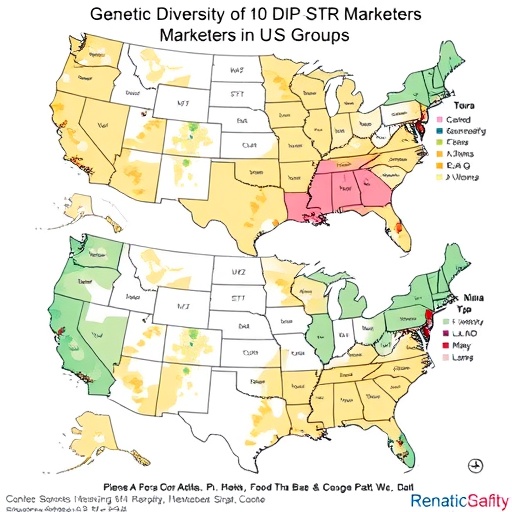In the multifaceted realm of healthcare, combating antimicrobial resistance (AMR) stands as one of the most pressing challenges of our time. The rise of resistant pathogens is not just a clinical dilemma but a global public health crisis that jeopardizes the effectiveness of commonly used antibiotics. To address this urgent issue, a recent study led by a team of nursing professionals, including Pérez-Baena, Torres-Gonçalves, and Holgado-Madruga, has proposed innovative nursing-led strategies designed specifically to tackle AMR through a multi-method research design. This research epitomizes the intersection of nursing practice and scientific inquiry in the quest for solutions to complex health problems.
The study asserts that nurses, who are often at the frontline of patient care, possess unique insights and capabilities that can significantly influence antibiotic stewardship initiatives. By integrating clinical expertise with evidence-based strategies, nurses can play a pivotal role in educating patients about the responsible use of antibiotics. This educational dimension is essential in a world where misinformation about antimicrobial medications is rampant, contributing to their misuse and subsequent resistance. Hence, the research emphasizes tailored educational interventions as one of the pillars of their comprehensive strategy.
Furthermore, the multi-method design adopted in this research allows for a more holistic understanding of the issue at hand. It encompasses a variety of methodologies, including qualitative interviews, quantitative surveys, and observational studies, to gain a nuanced perspective on antimicrobial resistance. This mixed-methods approach enables researchers to triangulate data, identifying trends and correlations that might remain hidden within a singular methodological framework. Such robust research design is crucial for capturing the complexity of AMR and the factors underlying it.
One of the prominent findings of the study is the critical need for collaboration among healthcare professionals. The authors highlight that the fight against AMR cannot be waged in isolation; instead, it necessitates a collaborative, interdisciplinary approach. Nurses, doctors, pharmacists, and microbiologists must work in concert to design and implement effective protocols for antibiotic prescribing. This collaboration is not only aimed at sharing knowledge but also at fostering a culture of responsibility when it comes to the usage of antimicrobials. The authors make a compelling case for regular multidisciplinary meetings to discuss case studies, share best practices, and analyze resistance patterns.
In addition to fostering collaboration, the study posits that technology can serve as a transformative ally in the battle against AMR. Digital health tools, including telemedicine and electronic health records, can enhance communication among healthcare providers. The integration of these technologies into everyday practice allows for real-time data sharing, which is invaluable when tracking antibiotic prescriptions and infection trends. The authors argue that harnessing technology can create more effective monitoring systems that ensure timely interventions and adherence to guidelines.
The importance of policy advocacy is another crucial element outlined in the research. To enact meaningful changes in antibiotic prescribing, there must be concerted efforts to influence health policies at local, national, and international levels. The researchers advocate for nursing professionals to engage in health policymaking, where their insights can shape regulations that govern antibiotic use. By standing at the intersection of practice and policy, nurses have the potential to drive systemic changes that support the sustainable use of antimicrobials.
A noteworthy aspect of this study is its focus on patient engagement as a cornerstone of effective antimicrobial stewardship. The authors emphasize that patients often remain unaware of the implications of antibiotic misuse. Therefore, strategies that empower patients to take an active role in their healthcare decisions are vital. Initiatives such as informational pamphlets, workshops, and direct consultations serve to clarify misconceptions and promote a better understanding of the necessity for judicious antibiotic use. By involving patients in the conversation around AMR, healthcare providers can significantly enhance the effectiveness of stewardship efforts.
What also stands out in this research is the call for continuous education and training for nursing professionals regarding AMR. This education needs to extend beyond basic training, incorporating the latest research findings and emerging trends in microbial resistance. The authors suggest that ongoing professional development programs are imperative for equipping nurses with the knowledge and skills necessary to combat this evolving threat. By fostering an informed nursing workforce, healthcare institutions can ensure that their staff remains vigilant and proactive in the face of AMR.
Various barriers to effective implementation of these strategies have been recognized in the study, including resource limitations and the varying degrees of awareness about AMR among healthcare staff. The authors recommend that healthcare institutions invest in resources that promote AMR awareness and prevention. This can include providing tools for monitoring antibiotic use, as well as time and personnel dedicated to educational programs. Identifying and addressing these barriers will be crucial for the success of any nursing-led initiatives aimed at combating antimicrobial resistance.
As the study draws to a close, it underscores the vital role that research and evidence play in guiding practices aimed at overcoming AMR. Emphasizing evidence-based practice ensures that the strategies implemented are not only effective but also relevant to the current landscape of healthcare challenges. By leveraging the findings of this research, nursing professionals can introduce informed interventions that cater to their specific patient populations and institutional contexts.
In summary, the nursing-led strategy proposed by Pérez-Baena, Torres-Gonçalves, and Holgado-Madruga presents a comprehensive framework for addressing antimicrobial resistance through multi-method design. By recognizing the capabilities of nursing professionals, fostering collaborative networks, leveraging technology, advocating for policy changes, engaging patients, and emphasizing continuous education, the authors provide a compelling roadmap toward a more sustainable approach to antibiotic use. The implications of their findings extend beyond the research setting, indicating a significant shift is necessary in how healthcare systems view the role of nursing in the fight against AMR.
The urgent necessity to address antimicrobial resistance cannot be overstated. This study illuminates the path forward for nursing professionals, demonstrating that they are not merely passive participants in the discussion but rather leading agents equipped with the knowledge and tools to instigate real change in healthcare. As the global community confronts the specter of AMR, the insights gleaned from this research are not only timely but essential for shaping the future landscape of healthcare.
In essence, the implications of this research extend far beyond its immediate recommendations. They call for a cultural shift in how we think about antimicrobial stewardship and the vital role nurses play in this endeavor. By advocating for systemic changes that prioritize education, collaboration, and patient engagement, the healthcare community can rise to meet the challenges posed by antimicrobial resistance with renewed vigor and determination.
Subject of Research: Nursing-led strategy to combat antimicrobial resistance
Article Title: Nursing-led strategy to combat antimicrobial resistance: multi-method design.
Article References:
Pérez-Baena, M.J., Torres-Gonçalves, A. & Holgado-Madruga, M. Nursing-led strategy to combat antimicrobial resistance: multi-method design.
BMC Nurs 24, 1177 (2025). https://doi.org/10.1186/s12912-025-03822-2
Image Credits: AI Generated
DOI:
Keywords: antimicrobial resistance, nursing, healthcare strategy, education, technology integration, patient engagement
Tags: addressing misinformation in healthcareantibiotic stewardship initiativescombating resistant pathogenseducational interventions for antibiotic useevidence-based nursing practicesglobal health crisis of AMRmulti-method research design in nursingnursing innovation in antimicrobial resistancenursing practice and scientific inquirynursing-led strategies for AMRresponsible antibiotic usagerole of nurses in public health





